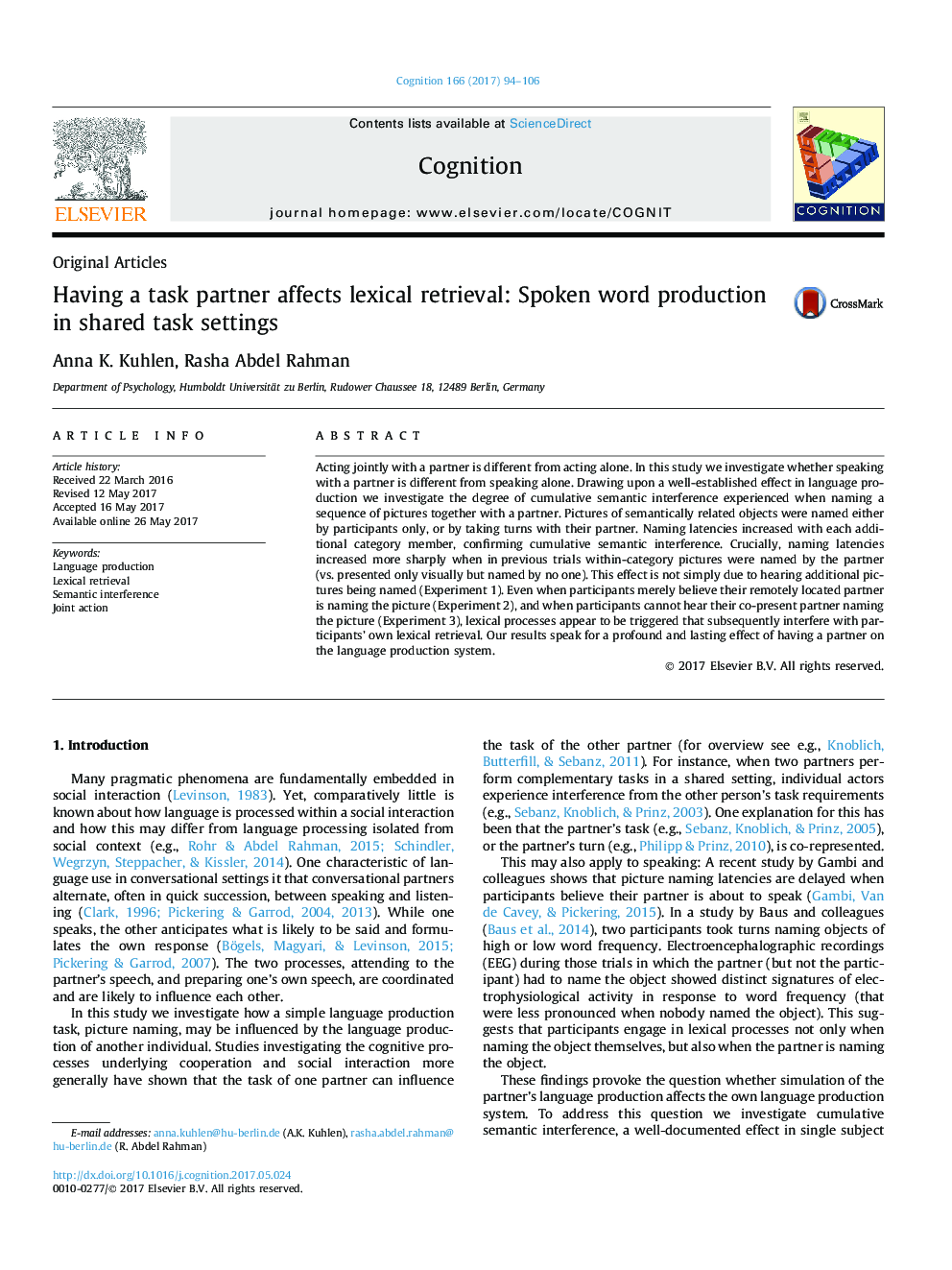| Article ID | Journal | Published Year | Pages | File Type |
|---|---|---|---|---|
| 5041545 | Cognition | 2017 | 13 Pages |
â¢Two speakers take turns naming semantically related pictures.â¢Naming latency increased with each related picture (cumulative semantic interference).â¢Naming latency also increased in response to partner naming pictures.â¢Mere belief of partner naming, without auditory feedback, elicited interference.â¢Participants appear to simulate lexicalization on behalf of task partner.
Acting jointly with a partner is different from acting alone. In this study we investigate whether speaking with a partner is different from speaking alone. Drawing upon a well-established effect in language production we investigate the degree of cumulative semantic interference experienced when naming a sequence of pictures together with a partner. Pictures of semantically related objects were named either by participants only, or by taking turns with their partner. Naming latencies increased with each additional category member, confirming cumulative semantic interference. Crucially, naming latencies increased more sharply when in previous trials within-category pictures were named by the partner (vs. presented only visually but named by no one). This effect is not simply due to hearing additional pictures being named (Experiment 1). Even when participants merely believe their remotely located partner is naming the picture (Experiment 2), and when participants cannot hear their co-present partner naming the picture (Experiment 3), lexical processes appear to be triggered that subsequently interfere with participants' own lexical retrieval. Our results speak for a profound and lasting effect of having a partner on the language production system.
